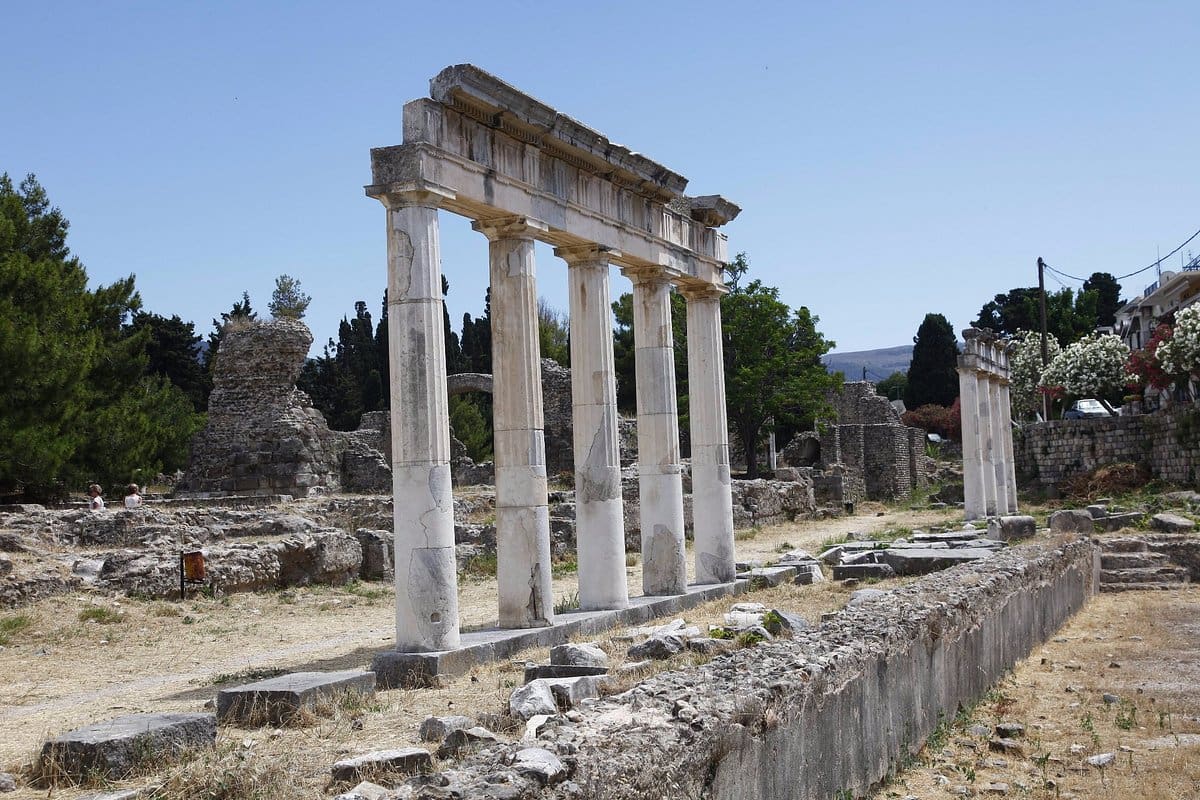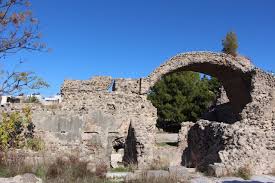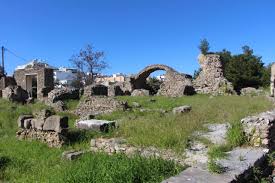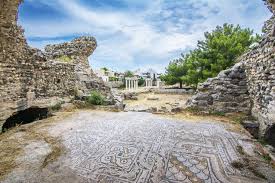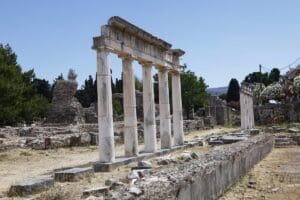Description
The Western Archaeological Zone of Rhodes, often referring to the area around the ancient city of Kamiros, is one of the most well-preserved classical sites in the Dodecanese. Located approximately 3 km from the modern village of Kalavarda, Kamiros was a major Doric settlement founded around the 6th century BCE. Built on three terraces descending toward the sea, the site reveals an orderly urban layout: an acropolis with a temple and stoa on the top level, residential blocks and grid-pattern streets in the middle, and a lower terrace featuring a Doric temple (likely dedicated to Apollo), the Fountain House with adjacent Agora, and the Peribolos of Altars dedicated to various deities.
Positioned atop Monte Smith hill near Rhodes Town, the Acropolis of Rhodes forms another key component of the western zone. This monumental area, dating largely from the Hellenistic period, includes the Temple of Apollo, the stadium, open-air theatre, library, gymnasium, and nymphaea. Built on terraced slopes, each monument offers commanding views over the city and sea, presenting a clear example of ancient Greek urban planning and ceremonial architecture.
Together, the Western Archaeological Zone—stretching from Kamiros in the northwest to the Monte Smith Acropolis—paints a vivid portrait of Rhodes’s classical legacy. Visitors can walk among ancient ruins, imagine the rituals and daily life of its inhabitants, and enjoy panoramic vistas that link past and present. This zone underscores the island’s historical importance long before the medieval era and complements the well-known sites in Rhodes’s Old Town and beyond.
Location
-
Leoforos Grigoriou V, Kos, Greece
